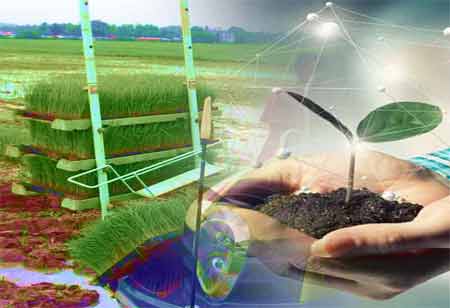Thank you for Subscribing to Agri Business Review Weekly Brief
The Future of Electrohorticulture in European Agribusiness
The demand for efficient and sustainable farming practices has intensified in response to the escalating global population.

By
Agri Business Review | Saturday, November 04, 2023
Stay ahead of the industry with exclusive feature stories on the top companies, expert insights and the latest news delivered straight to your inbox. Subscribe today.
Electro-horticulture promotes faster plant growth, reduces reliance on chemicals, enhances stress resilience, improves nutrient utilisation, and promotes sustainable agricultural practices, leading to a more secure and sustainable future for food production.
FREMONT, CA: The demand for efficient and sustainable farming practices has intensified in response to the escalating global population. In the quest to harmonise technology and agriculture, pioneering solutions have surfaced, with electrical horticulture emerging as a promising field.
Key Technologies Driving Electrohorticulture
Electrostatic Field Management: Employing electrostatic fields around crops has shown potential in enhancing nutrient uptake and water absorption. By positively influencing plant cell membranes, these fields facilitate the movement of essential substances, promoting healthier and more robust plant growth.
Precision Electrostimulation: Tailored electrostimulation technologies enable farmers to selectively target specific plants or crops. This precision allows for customised treatments, optimizing resource use and minimising environmental impact.
Electrochemical Sensors: The integration of electrochemical sensors in the soil can provide real-time data on soil health and nutrient levels. This information is invaluable for farmers seeking to make data-driven decisions for crop management and resource allocation.
Smart Electro-Hydroponics Systems: The convergence of electro-horticulture and hydroponics has given rise to smart systems that leverage electrical currents to optimise nutrient delivery in hydroponic setups. This integration enhances nutrient absorption, leading to faster growth and increased yields.
Benefits of Electrohorticulture
Increased Crop Yields: Electrohorticulture has demonstrated the potential to significantly boost crop yields by promoting healthier plants and improving the efficiency of nutrient absorption.
Resource Efficiency: By precisely targeting plants with electrostimulation, farmers can optimise resource use, including water and fertilisers. This reduces costs and also minimises the environmental impact of traditional farming practices.
Year-Round Production: Electrohorticulture, particularly when integrated with controlled environment agriculture (CEA), allows for year-round production, overcoming the limitations imposed by seasonal changes and adverse weather conditions.
Reduced Environmental Impact: The precise nature of electro-horticulture minimises the need for excessive chemical inputs, thus reducing soil and water pollution. This environmentally friendly approach aligns with the growing global emphasis on sustainable agriculture.
Within the European agribusiness landscape, electro-horticulture appears to hold a promising future, offering a technologically advanced and sustainable solution to the challenges confronting modern agriculture. Farmers may soon find themselves at the forefront of a new era, where the fusion of horticulture and electricity has the potential to revolutionise the face of European agriculture—provided ongoing research and development in this domain persist.





